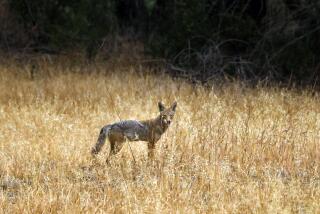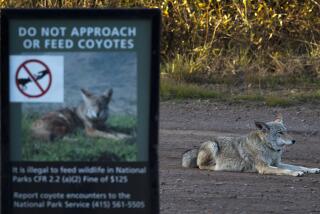After attack on toddler, alarmed Huntington Beach residents are told to haze coyotes
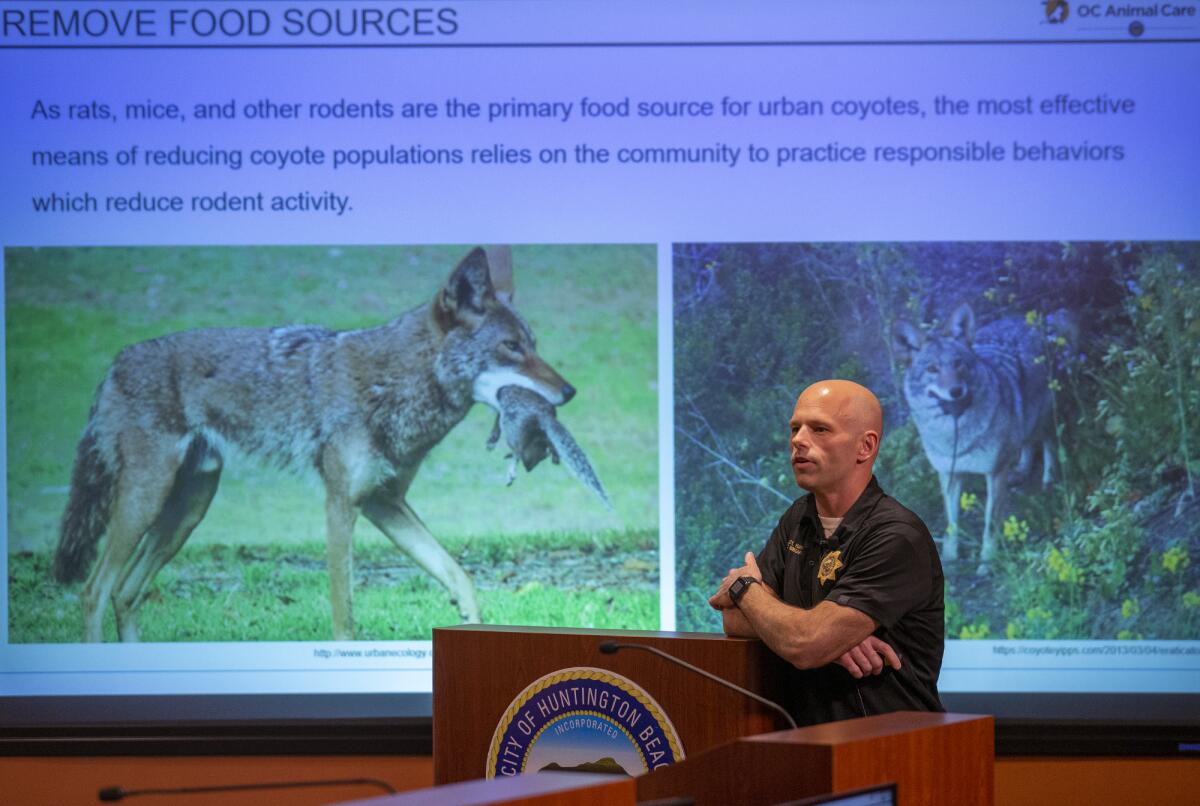
- Share via
Huntington Beach resident Kena Zaide knows firsthand the effects of coyotes on her city lately.
Zaide, who lives in north Huntington Beach near the intersection of McFadden Avenue and Bolsa Chica Street, said a coyote swooped in and took her 15-year-old Yorkshire terrier, Dolce, a couple of weeks ago. Her ex-husband chased the coyote barefoot but couldn’t find it.
A neighbor soon brought her Dolce’s collar after seeing the 5-pound dog dead in the street. It was another victim of what some say is a growing problem in Surf City.
Zaide’s dog died the same week that a coyote bit a 2-year-old girl at the beach, north of the pier. That animal was later one of two coyotes killed by police.
“You see these coyotes everywhere, at all times of the day,” Zaide said. “We’re in an urban area. If we lived in the mountains, it would be different, but this is an urban area and they’re not afraid of humans. If they don’t do anything, more people could get hurt.”
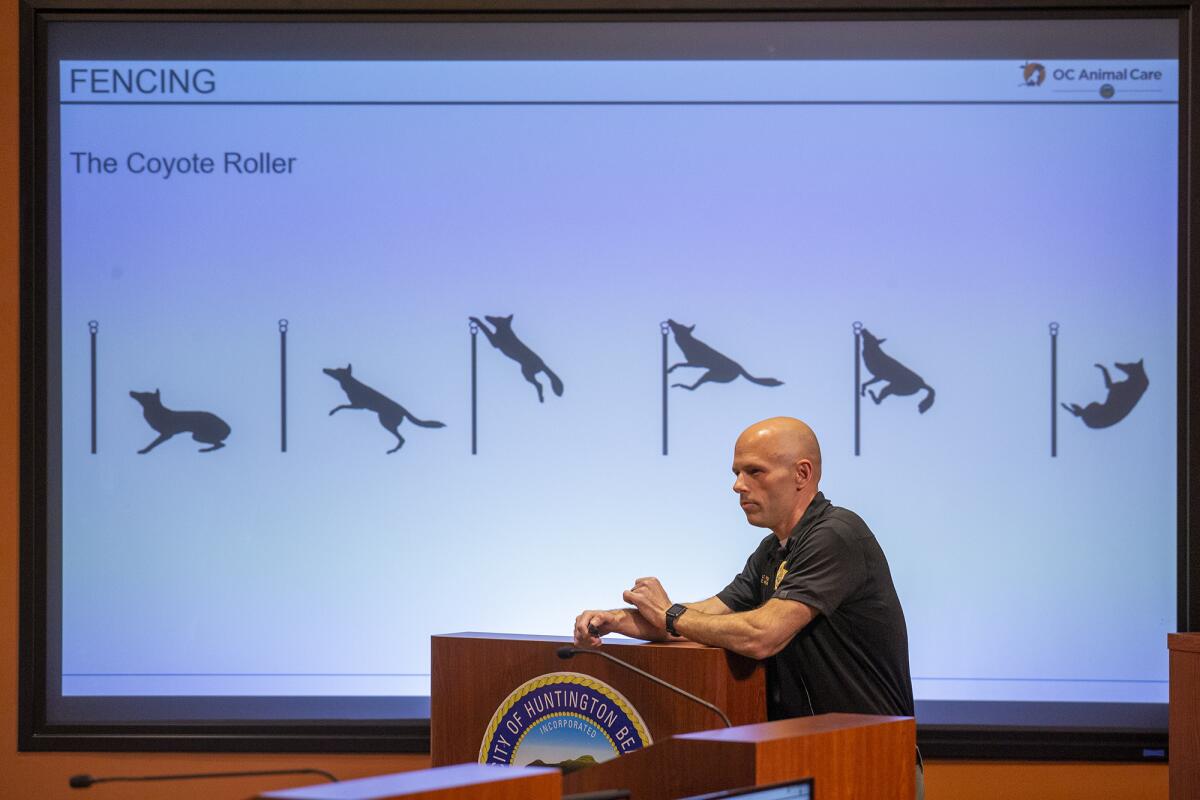
Zaide was one of dozens of people who attended a town hall meeting Monday night in the City Council chambers. Council members Natalie Moser and Rhonda Bolton attended and spoke with residents afterward about their issues.
Lt. Kevin Frager of OC Animal Care gave a presentation on dealing with coyotes, followed by a question-and-answer session that grew animated at times as residents got frustrated. Rebecca Barboza of the California Department of Fish and Wildlife, as well as Huntington Beach Police Chief Eric Parra, also answered questions from the audience.
Rodents are coyotes’ primary source of food, Frager said, so one key for cutting down on coyote interactions is practicing responsible behaviors that reduce rodent activity.
If someone does encounter a coyote, officials said, they should “haze” the animal, which means getting loud and shouting at the coyote to move it out of the area and keep it wary of humans.
“You’re not done hazing that coyote until you can’t see them anymore,” Frager said.
Barboza said no funding has been available for a study on how many coyotes are in the area, but many in the audience indicated that they are seeing more coyotes now than previously. A Facebook group called HB Coyote Forum, where residents discuss recent sightings, has more than 700 members.
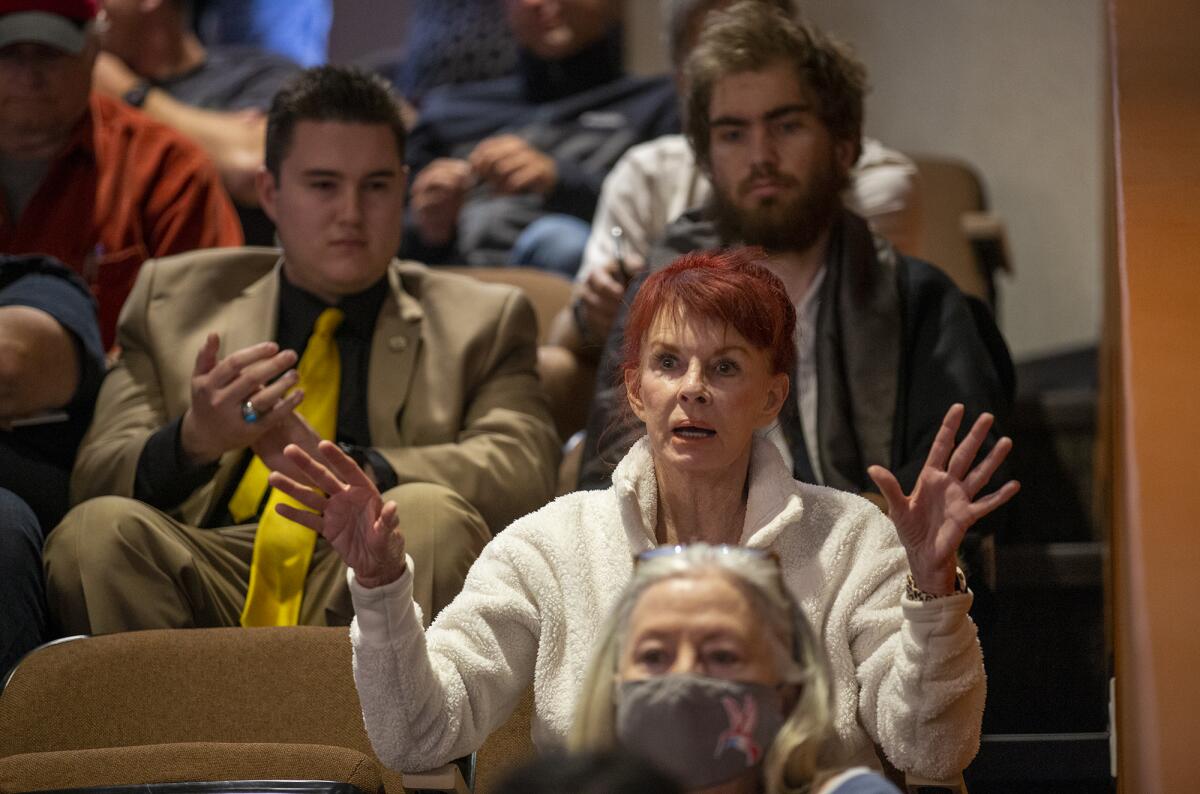
Seacliff resident Luci Kazebee has lived in Huntington Beach for nearly 50 years, but she said only recently has her backyard turned into a “freeway” of coyotes. As a result, her two cats have not been out of the house for three years, and her dog cannot go anywhere in the yard without supervision.
“Day or night, they’re in the backyard,” she said. “They’re at the golf course. They’re at my fence. It’s a freeway, back and forth…. Those coyotes want to eat my animals. There’s no other purpose for them to be in my yard but to get my dog or my cats.”
Frager said other strategies include keeping fruit from trees off the ground, reminding neighbors to handle overflowing trash cans and keeping pets indoors. Coyote rollers — rotating aluminum tubes atop fences and walls that stop animals from getting traction to hop over — can also be effective, though Frager said he has seen an injured coyote hurdle a 10-foot wall.
Meanwhile, Parra talked about starting neighborhood coyote watch programs and encouraging communication among neighbors.
“If you’re doing it in your backyard and your neighbors aren’t doing it, that doesn’t help,” Parra said.
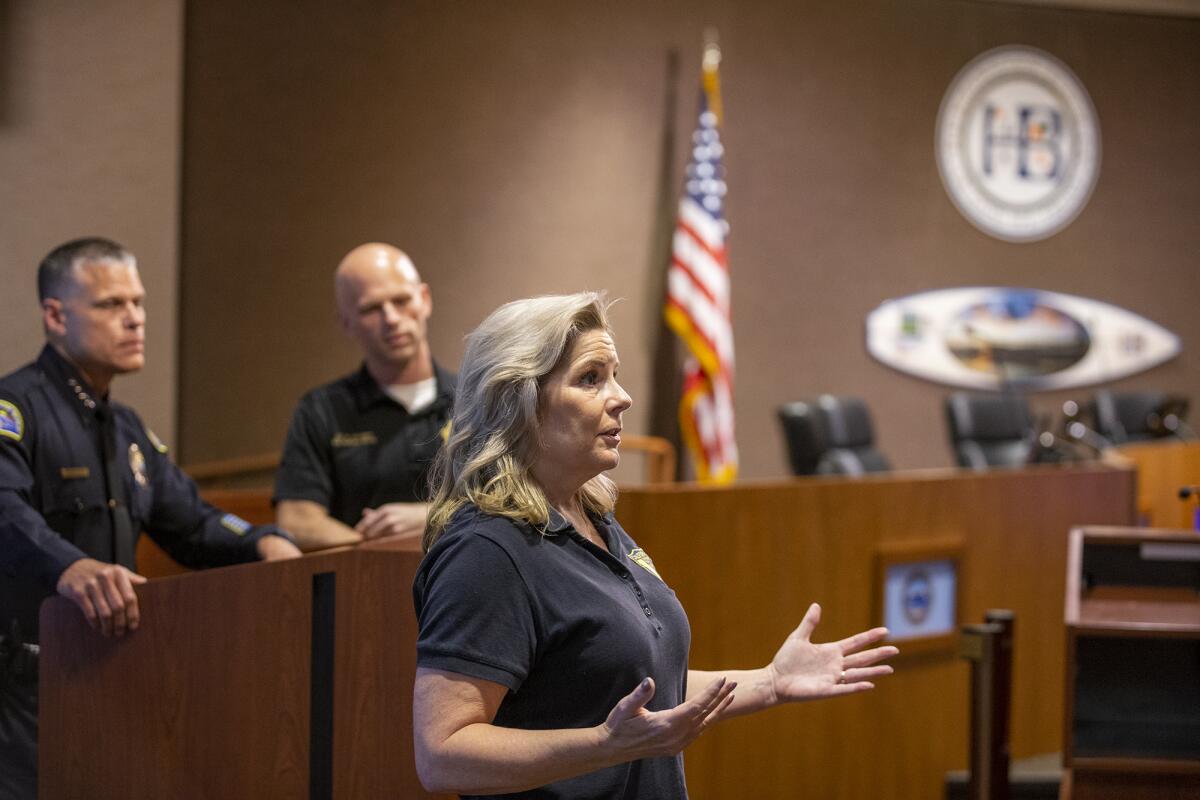
Residents are asked to report coyote sightings in the MyHB app.
Kazebee said after the meeting that she was skeptical and frustrated by the solutions offered by the experts. She said she was already educated on coyotes but felt like the problem was being put right back on the residents.
“They talk and don’t do anything,” she said. “The wildlife people are just completely blowing smoke.”
Aaron Pai, the owner of Huntington Surf & Sport, had a different perspective, urging his fellow residents to learn to coexist with and respect coyotes.
“Coyotes are the ultimate locals of our town,” he said at the meeting. “They were here first…. All they are trying to do is protect their families and survive, just like all of us here tonight.”
More to Read
Sign up for Essential California
The most important California stories and recommendations in your inbox every morning.
You may occasionally receive promotional content from the Los Angeles Times.

